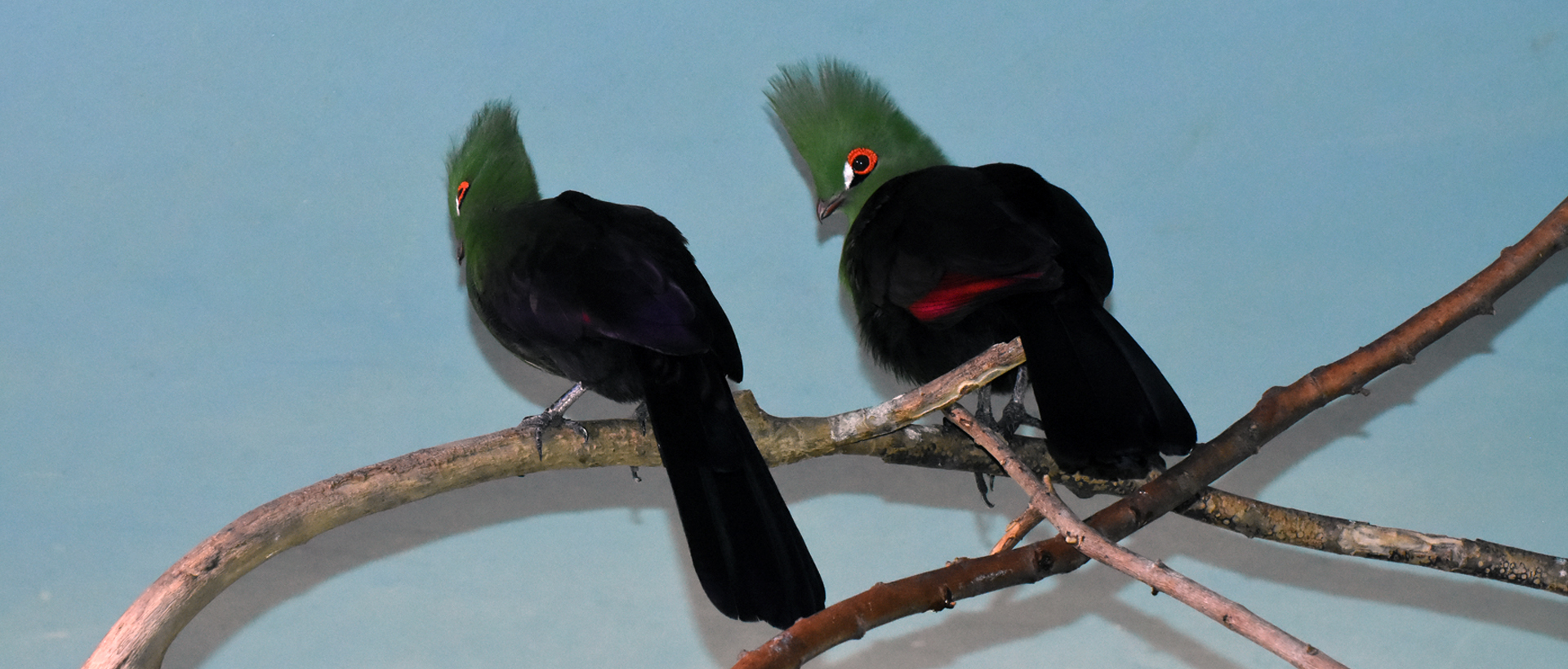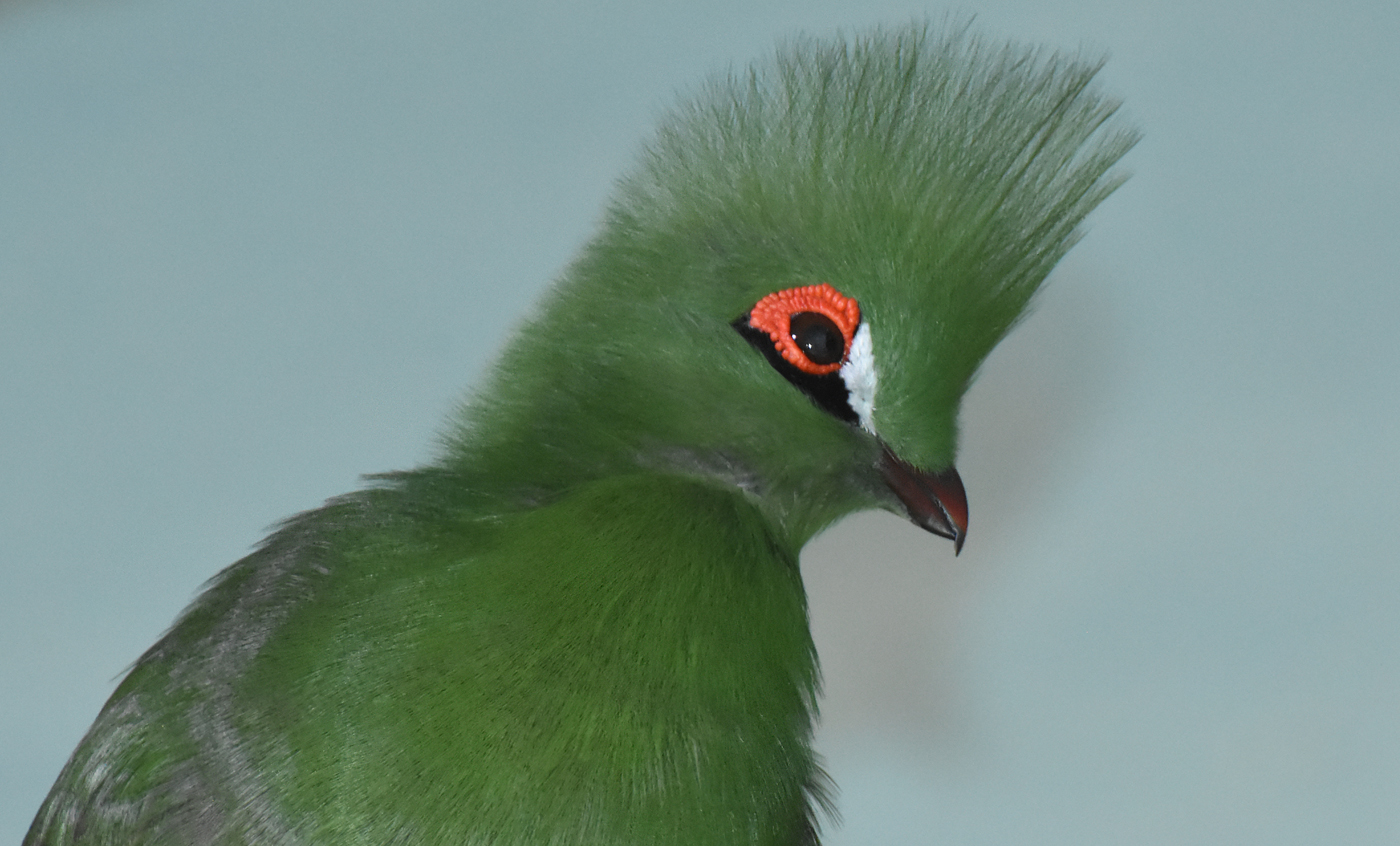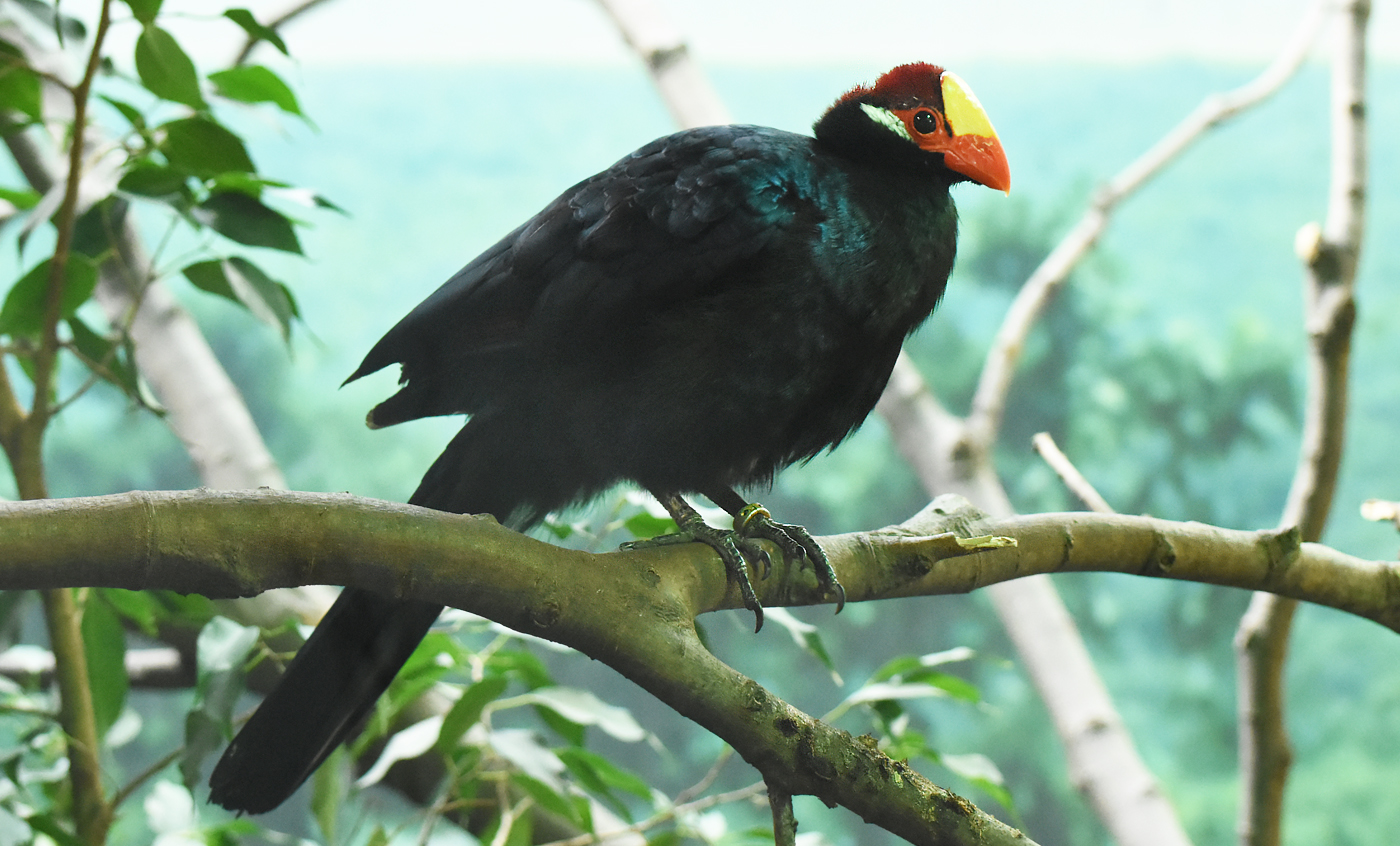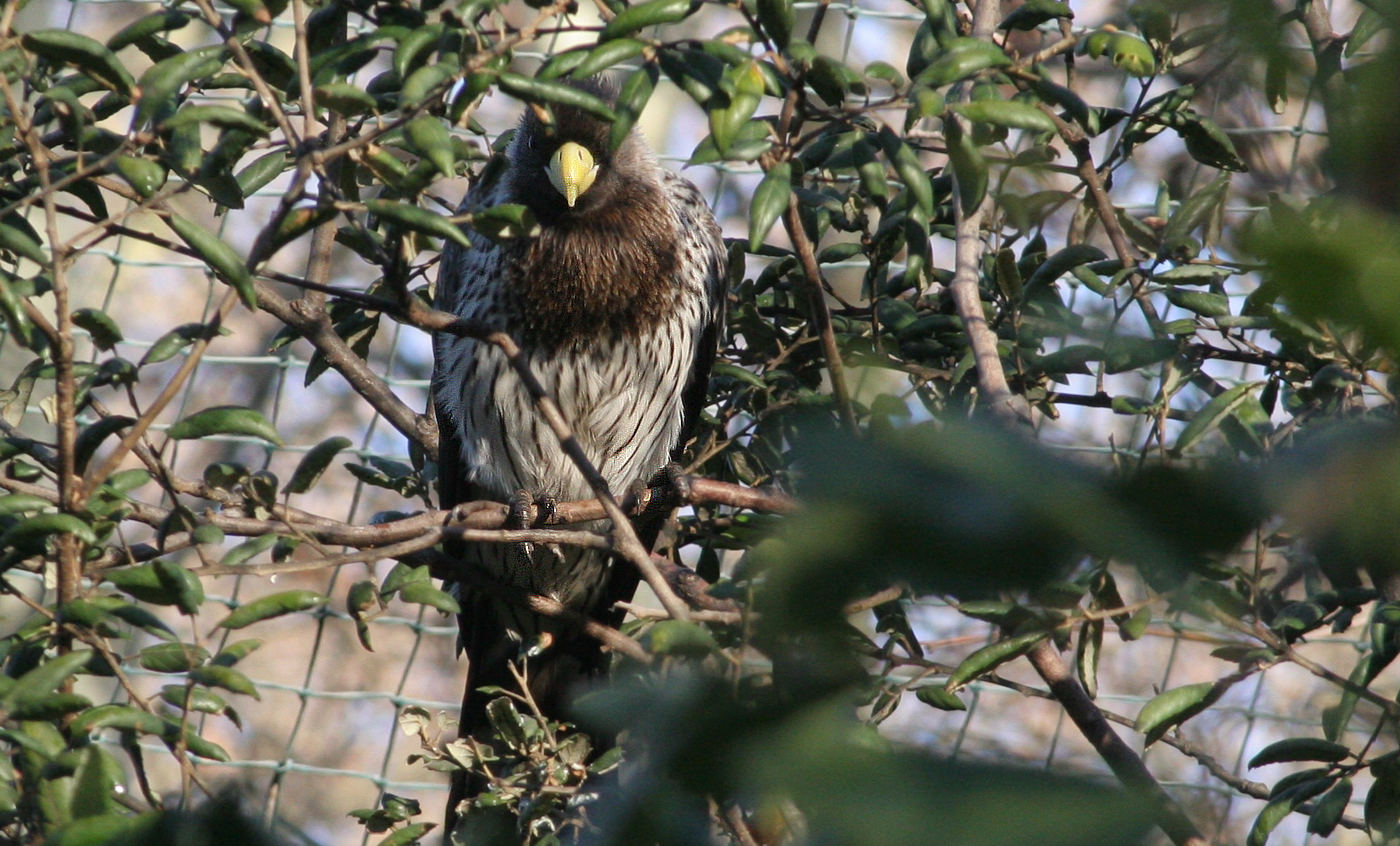Senegal Turaco
These attractive jungle birds from West Africa live on fruit, flowers and shoots. They live in gallery forests and next to crop fields from sea level up to 1,100 metres.
Their plumage features two pigments that do not exist in any other bird: turacine (red) and turacoverdin (green). The red colour is found under the wings and is only visible when the birds are in flight.
Natural habit
Forests of West Africa
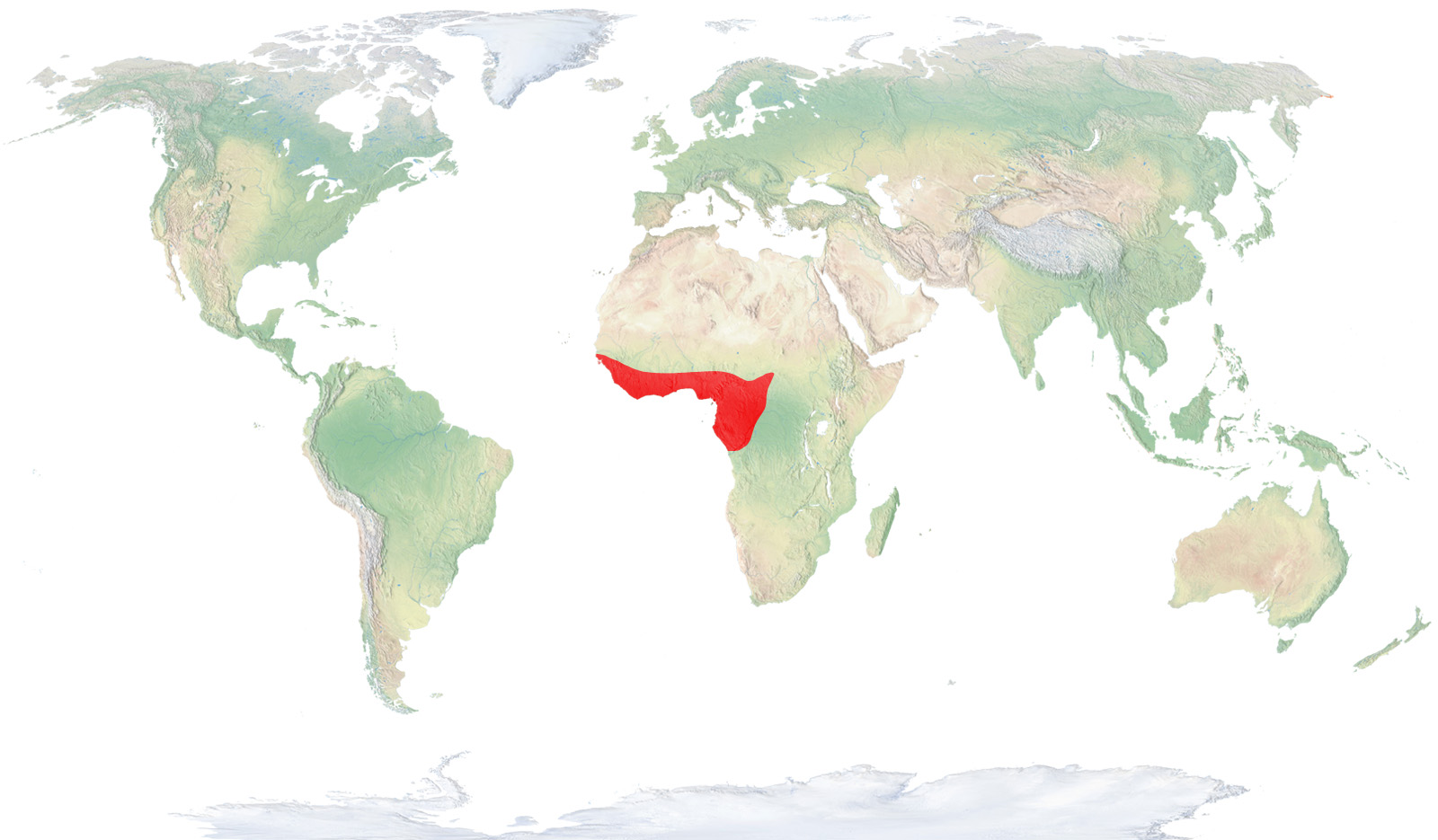
- Distribution / Resident
- Breeding
- Wintering
- Subspecies
Risk level
- Extint
- Extint in the wild
- Critically endangered
- In Danger
- Vulnerable
- Near threatened
- Minor concern
- Insufficient data
- Not evaluated
Taxonomy
Physical characteristics
Biology
Reproduction
Biology
The Guinea turaco is a mid-sized bird some 40 cm long, with green colouring on its head, breast and dorsal, which turns a deep bluish or lilac tone on the wings to the tips of its long tail. It has a striking green crest and a small reddish coloured beak. A slash of bright white in the inner corners of the eyes and a red circle around them adds a splash of colour to this part of its face. The subspecies at the Zoo does not have the long white mark across the top of its cheeks. Turacos’ plumage has two pigments unique to the entire bird world: turacine (a red colour) and turacoverdin (a green colour). The red is mainly under their wings and only visible when they fly.
They occupy gallery forests and the edges of croplands from sea level to 1100 metres high.
These striking jungle birds from western Africa feed on fruit, flowers and shoots.
It generally breeds between May and June, although in some of its areas of distribution it may do so between December and February. It builds a platform of branches and twigs interwoven with plant matter of different origins some five metres from the ground, in which it generally lays two spherical whitish coloured eggs, which both members of the pair incubate for 21 to 23 days.
Sedentary and highly territorial. They remain in the same territory the entire year and aggressively defend them. They may move between drier and wetter areas depending on the food sources available.
Abundant and common in the large part of its territory.



